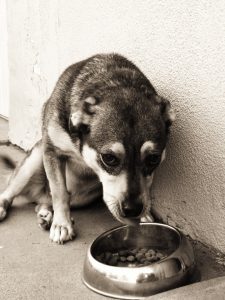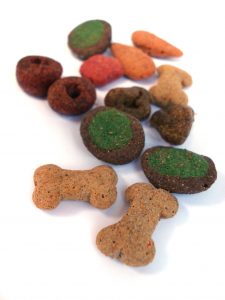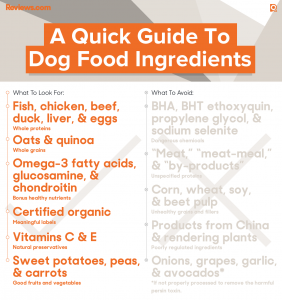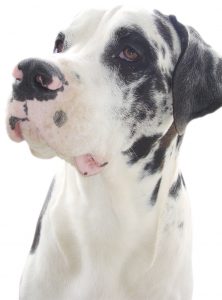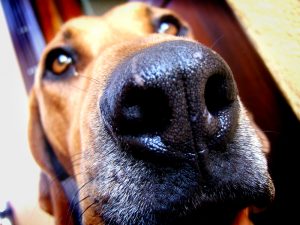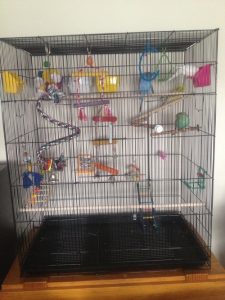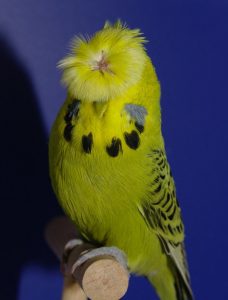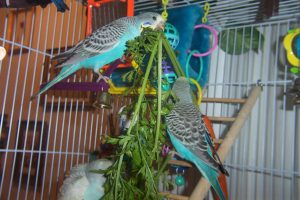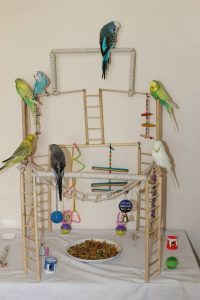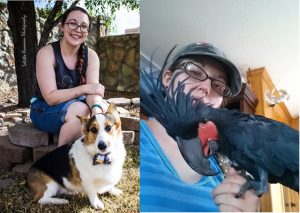Since most dogs seem to enjoy eating just about anything they can get their mouths on, some people think all dog food equal. As long as they’re being fed enough food and getting some exercise, they should be fine! After all, stray dogs survive on nothing but scraps and trash, right? Unfortunately, this is far from true. Feeding your dog the cheaper, low-quality brands such a Beneful and Kibbles n’ Bits is basically the equivalent of feeding your child candy and chips for every meal of the day. Sure, it will make them full and happy for a few minutes, but they will be lacking major nutrients which will cause severe health issues in the long run. That dog eating McDonalds leftovers on the street might be surviving, but they won’t be happy and healthy for long. So, before you go out and buy your next bag of Science Diet, read up on the following tips and concerns.
Foods to Avoid
The ingredients of your dog’s food are the main thing you should be looking at while purchasing a new bag. In their post entitled Best Dog Food Reviews, Reviews.com notes that some ingredients in cheap, low quality dog food provide little to no nutrients, and they can even make the food “unsafe and unhealthy.” Some of the worst ingredients include the terms “meat” or “meat-meal”. Reviews.com also explains that “in California, manufacturers have given them the appetizing name of ‘dry rendered tankage.’ So why avoid them? It’s almost impossible to tell what’s being rendered: It can be roadkill, zoo animals, and sometimes even spoiled meat from the grocery store that’s still wrapped in plastic.”
Other ingredients can also be hazardous to your dog’s health. Ingredients like corn, wheat, onions, and garlic should be avoided at all costs. Reviews.com provided a handy little infographic explaining some ingredients that should be avoided, and their healthier alternatives.
Finally, Reviews.com also explains that, “Digestive problems, including bloat and inflammatory bowel disease (IBD), are symptomatic of poor ingredients that don’t contain enough whole, unprocessed foods. Food allergies can also lead to digestive issues — many of the experts we reached out to have seen evidence that dogs are sensitive to wheat and corn, both popular fillers.” While not every dog will have these issues with low quality dog food, all of the combined possible side effects should be enough to cause any dog owner to reconsider their choices.
Healthier Options
First, you must decide what type of food you’d like to feed your dog. While dry dog food is typically considered the best option all the way around, some dogs require a different option such as wet food, dehydrated food, raw food, or homemade food. If you have a senior dog, they will probably require a softer food than a younger dog because they may have more sensitive teeth, or they may have lost teeth or chewing power throughout the years.
If you have a relatively healthy, young to middle aged dog, they will probably be okay with dry food, perhaps topped with some canned food as an extra treat. Always keep an eye out for any signs of allergies that your dog could be having toward the food, especially if you make a change in their diet. For example, my Staffordshire Terrier mix is extremely allergic to any type of grain and potatoes. She also has many environmental allergies, but changing her food to a high-quality, grain-free and potato-free diet made a huge change. For more information about dog allergies, read my article My Dog Has Allergies: Now What?
In order to find the very best foods, Reviews.com used a “funnel” to sort out the brands that don’t pass their test. They started by removing the products that don’t have any kind of meat listed as the first ingredient. Then they removed products that contain grain, wheat, or flour, then they removed the ones with beet pulp or sugar. They also removed products that contained “by-products or sauces.” Finally, they “reviewed brands for recalls, ingredient sources, history, and customer satisfaction” and they “reviewed the remaining formulas based on the best ratio of protein, fat, and carbs, as well as the source of protein.”
After going through this rigorous process, they found a total of 29 brands that fit their strict protocols. The top 13 brands are Orijen, ACANA, Earthborn, Ziwipeak, Eagle Peak, Fromm, Addiction New Zealand, The Honest Kitchen, AvoDerm, Horizon Legacy, and Pinnacle. Of these brands, our local pet food store, Better Life Natural Pet Foods carries Earthborn, Fromm, The Honest Kitchen, AvoDerm, and Pinnacle along with a variety of other high quality dry, canned, dehydrated, and raw dog food brands.
The Right Option for You
Because there are still a large number of brands that you can choose from, you’ll get to have the chance to pick the right brand for you and your dog. Price is of course one of the first things you’ll have to consider when looking at a higher quality dog food brand. Reviews.com explains, “We understand that the price points of our top-rated choices may be higher than the average unit price in the industry, and might be simply too costly for many consumers. Still, our goal was to surface other key considerations — like ingredients and history of handling recalls — when deciding which formula is best for your dog. Moving forward, we also hope to provide more clarity around affordability, as well.” If you feed your dog good food from the start, the price of your vet bills will go down drastically throughout the years. Paying more for good food now means a healthier, happier life for your pup down the line.
All this being said, I find it important to note that, even though I feed my dog a very high-quality dog food called Zignature, it is not mentioned among the list of top brands. It may not have met some of Review.com’s strict standards, or it simply may not have been among the 115 brands they looked at. This leads me to believe that, even though this is a very well-comprised and highly detailed list, there might be some exceptions. I do still believe that Zignature is a very good brand, so if you would like information about a particular dog food, I would suggest talking to our local professionals at Better Life Natural Pet Foods. Reviews.com provided an excellent starting point for those who are reconsidering their dog food brand, but there is always more to learn. Feeding your dog a high-quality, healthy food should be as important as feeding your kids fruits and veggies, so I believe that thirty minutes of research to find the best food brand available for your pal is worth its weight in gold.
For additional insight into healthier food options for your dog, check out my previous article, Feeding Dogs Human Food: How to Change Your Ways.

Jessica Smith, Managing Editor, having been raised in a household full of dogs, guinea pigs, hamsters, and all things furry, Jessica’s love of animals has only grown over the years. She is currently volunteering for Safe Haven Animal Sanctuary in her free time when she isn’t out and about with her ridiculous pit bull mix, Annabel Lee, or taking care of her two goldfish, Carrot Cake and Winchester. She is also putting her literature degree to use by working as an editor for a local online magazine, Independent Noise. While she has no plans for the future, she knows that it will be filled with fur and fiction galore. You can e-mail Jessica at managerjessica@yourpetspace.info

